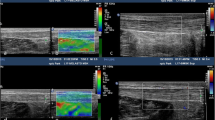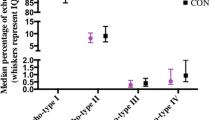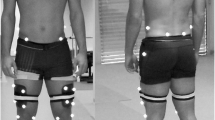Abstract
Introduction
Running is a very popular modality of physical activity, which may help to lose weight and normalize pathological values of blood parameters in subjects suffering from metabolic disorders. Given that both overuse and metabolic pathologies are responsible for the onset of tendon damage, aim of the present study was to evaluate whether the first group of pathogenetic factors or the latter was more responsible for mid-portion Achilles tendinopathy.
Method
Thirty-six and 28 subjects with and without mid-portion Achilles tendinopathy, who were regular runners and started running for metabolic disorders, were enrolled, respectively. Information about body weight and blood parameters at baseline was collected. The characteristics of running practice, dietary habits and anthropometric measures were registered. An ultrasound evaluation of the tendon was performed, and the blood metabolic parameters were evaluated.
Results
The amount of running years and mileage was equivalent in both groups. A similar weight loss was observed; the subjects with mid-portion Achilles tendinopathy showed a worse metabolic profile (Hb1aC%, p = 0.008; total cholesterol, p = 0.04; HDL cholesterol, p = 0.003; triglycerides, p = 0.009).
Conclusions
These findings suggest that the subjects with less evident positive effects of running on metabolism are more exposed to the onset of mid-portion Achilles tendinopathy.

Similar content being viewed by others
References
Fiuza-Luces C, Garatachea N, Berger NA, Lucia A (2013) Exercise is the real polypill. Physiology 5:330–358
Williams PT, Thompson PD (2013) Walking versus running for hypertension, cholesterol, and diabetes mellitus risk reduction. Arterioscler Thromb Vasc Biol 33:1085–1091
Kluitenberg B, van Middelkoop M, Diercks R, van der Worp H (2015) What are the differences in injury proportions between different populations of runners? A systematic review and meta-analysis. Sports Med 45:1143–1161
Tschopp M, Brunner F (2017) Diseases and overuse injuries of the lower extremities in long distance runners. Z Rheumatol 76:443–450
Ribbans WJ, Collins M (2013) Pathology of the tendo Achillis: do our genes contribute? Bone Joint J 95-B:305–313
Abate M, Schiavone C, Salini V, Andia I (2013) Occurrence of tendon pathologies in metabolic disorders. Rheumatology 52:599–608
Kıraç FS (2013) Is ethics approval necessary for all trials? A clear but not certain process. Mol Imaging Radionucl Ther 22:73–75
Thompson FE, Midthune D, Kahle L, Dodd KW (2017) Development and evaluation of the National Cancer Institute’s dietary screener questionnaire scoring algorithms. J Nutr 147:1226–1233
Maffulli N, Longo UG, Testa V, Oliva F, Capasso G, Denaro V (2008) Italian translation of the VISA-A score for tendinopathy of the main body of the Achilles tendon. Disabil Rehabil 30:1635–1639
Sunding K, Fahlström M, Werner S, Forssblad M, Willberg L (2016) Evaluation of Achilles and patellar tendinopathy with greyscale ultrasound and colour Doppler: using a four-grade scale. Knee Surg Sports Traumatol Arthrosc 24:1988–19896
Salini V, Abate M (2011) Percutaneous steroidal treatment in relapses of chronic tendinopathies: a pilot study. Int J Immunopathol Pharmacol 24:211–216
Ohberg L, Lorentzon R, Alfredson H (2001) Neovascularisation in Achilles tendons with painful tendinosis but not in normal tendons: an ultrasonographic investigation. Knee Surg Sports Traumatol Arthrosc 9:233–238
Shaikh Z, Perry M, Morrissey D, Ahmad M, Del Buono A, Maffulli N (2012) Achilles tendinopathy in club runners. Int J Sports Med 33:390–394
van der Worp MP, ten Haaf DS, van Cingel R, de Wijer A, Nijhuis-van der Sanden MW, Staal JB (2015) Injuries in runners; a systematic review on risk factors and sex differences. PLoS ONE 10:e0114937
Abate M, Salini V, Schiavone C (2016) Achilles tendinopathy in elderly subjects with type II diabetes: the role of sport activities. Aging Clin Exp Res 28:355–358
Tilley BJ, Cook JL, Docking SI, Gaida JE (2015) Is higher serum cholesterol associated with altered tendon structure or tendon pain? A systematic review. Br J Sports Med 49:1504–1509
Mul JD, Stanford KI, Hirshman MF, Goodyear LJ (2015) Exercise and regulation of carbohydrate metabolism. Prog Mol Biol Transl Sci 135:17–37
Pedersen BK (2017) Anti-inflammatory effects of exercise: role in diabetes and cardiovascular disease. Eur J Clin Investig 47:600–611
Neufer PD, Bamman MM, Muoio DM et al (2015) Understanding the cellular and molecular mechanisms of physical activity-induced health benefits. Cell Metab 22:4–11
Bouchard C, Rankinen T (2001) Individual differences in response to regular physical activity. Med Sci Sports Exerc 33:S446–S451
Kohrt WM, Malley MT, Coggan AR et al (1991) Effects of gender, age, and fitness level on response of VO2 max to training in 60–71 yr olds. J Appl Physiol 71:2004–2011
Lessard SJ, Rivas DA, Alves-Wagner AB et al (2013) Resistance to aerobic exercise training causes metabolic dysfunction and reveals novel exercise-regulated signaling networks. Diabetes 62:2717–2727
Hay M, Patricios J, Collins R et al (2013) Association of type XI collagen genes with chronic Achilles tendinopathy in independent populations from South Africa and Australia. Br J Sports Med 47:569–574
Nell EM, Van Der Merwe L, Cook J, Handley CJ, Collins M, September AV (2012) The apoptosis pathway and the genetic predisposition to Achilles tendinopathy. J Orthop Res 30:1719–1724
Mansfield JC, Holden H, Tarlow JK et al (1994) Novel genetic association between ulcerative colitis and the anti-inflammatory cytokine interleukin-1 receptor antagonist. Gastroenterology 106:637
Langdahl BL, Løkke E, Carstens M, Stenkjær LL, Eriksen EF (2000) Osteoporotic fractures are associated with an 86-base pair repeat polymorphism in the interleukin-1-receptor antagonist gene but not with polymorphisms in the interleukin-1β gene. J Bone Miner Res 15:402–414
Olofsson PS, Sheikine Y, Jatta K et al (2009) A functional interleukin-1 receptor antagonist polymorphism influences atherosclerosis development. The interleukin-1 beta: interleukin-1 receptor antagonist balance in atherosclerosis. Circ J 73:1531–1536
Everard W, Thornton S, Scott E (1995) Motivation in the committed runner: correlations between self-report scales and behavior. Health Promot Int 10(3):177–184
Short ME, Goetzel RZ, Tabrizi MJ, Ozminkowski RJ, Gibson TB, DeJoy DM, Wilson MG (2009) How accurate are self-reports? An analysis of self-reported healthcare utilization and absence when compared to administrative data. J Occup Environ Med 51:786–796
Colditz G, Martin AP, Stampfer MJ, Willett WC, Sampson L, Rosner B, Hennekens CH, Speizer FE (1986) Validation of questionnaire information on risk factors and disease outcomes in a prospective cohort study of women. Am J Epidemiol 123:894–900
Author information
Authors and Affiliations
Corresponding author
Ethics declarations
Conflict of interest
The authors disclose any conflicts of interest related to the research or the manuscript or to any previous presentation of the research, manuscript or abstract. They assure that authorship has been granted only to those individuals who have contributed substantially to the research or manuscript.
Ethical approval
The procedure followed was in accordance with the Declaration of Helsinki, and the written informed consent was obtained from each patient.
Rights and permissions
About this article
Cite this article
Abate, M., Salini, V. Mid-portion Achilles tendinopathy in runners with metabolic disorders. Eur J Orthop Surg Traumatol 29, 697–703 (2019). https://doi.org/10.1007/s00590-018-2336-2
Received:
Accepted:
Published:
Issue Date:
DOI: https://doi.org/10.1007/s00590-018-2336-2




